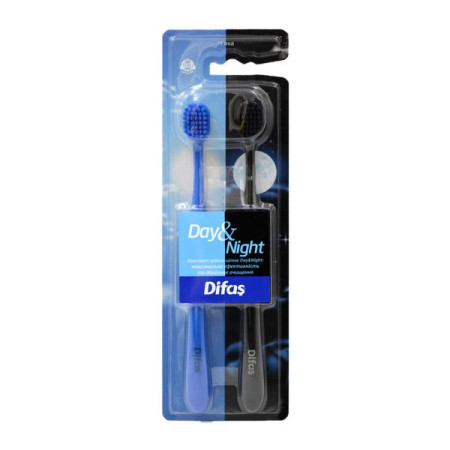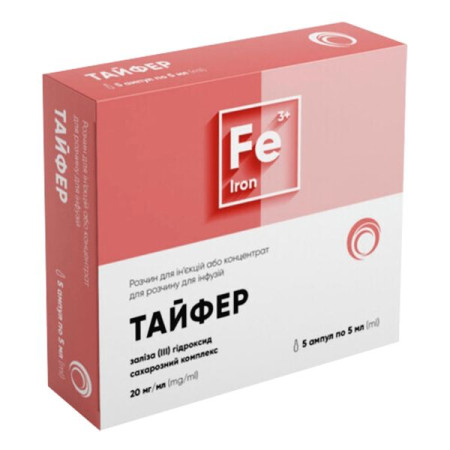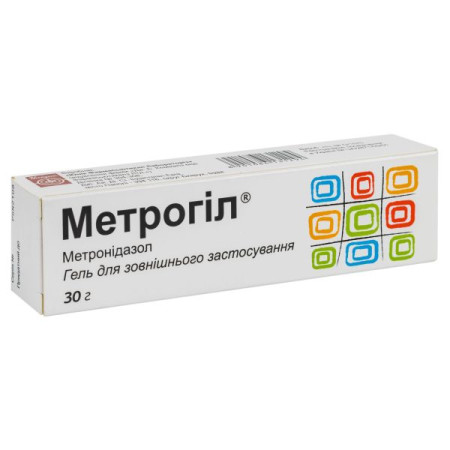Rupafin tablets 10 mg No. 10

Instructions Rupafin tablets 10 mg No. 10
Composition
active ingredient: rupatadine fumarate;
1 tablet contains rupatadine fumarate 12.8 mg, corresponding to 10 mg of rupatadine;
Excipients: lactose monohydrate; pregelatinized corn starch; microcrystalline cellulose; red iron oxide (E 172); yellow iron oxide (E 172); magnesium stearate.
Dosage form
Pills.
Main physicochemical properties: round tablets, light pink-orange in color, without markings.
Pharmacotherapeutic group
Respiratory system drugs. Other antihistamines for systemic use. Rupatadine. ATX code R06A X28.
Pharmacological properties
Pharmacodynamics
Rupatadine belongs to the second generation of antihistamines and is a long-acting histamine antagonist with selective peripheral antagonistic activity at H1 receptors. Some of its metabolites (desloratadine and its hydroxylated metabolites) retain antihistamine activity and may contribute in part to the overall efficacy of the drug.
In vitro studies with rupatadine at high concentrations have shown inhibition of mast cell degranulation induced by immunological and non-immunological stimuli, as well as the release of cytokines, in particular TNFα, from human mast cells and monocytes. The clinical significance of the observed experimental data remains to be confirmed.
During clinical studies of rupatadine at doses from 2 mg to 100 mg in volunteers (n=375) and patients (n=2650) with allergic rhinitis and chronic idiopathic urticaria, no significant effect of the drug on the results of electrocardiographic studies was found.
Chronic idiopathic urticaria was studied in a clinical model of the disease because, regardless of etiology, the pathophysiology of the disease remains the same, and because in the future it will be easier to recruit patients with chronic urticaria. Since histamine release is a causal factor in all manifestations of urticaria, rupatadine is expected to be effective in the symptomatic treatment of chronic idiopathic urticaria and other manifestations of urticaria, as indicated in clinical guidelines.
In placebo-controlled studies of chronic idiopathic urticaria, rupatadine was effective in reducing the mean symptom score (reduction from baseline: rupatadine – 57.5%, placebo – 44.8%) and the mean number of rashes (54.3% compared to
39.7%) after four weeks of treatment.
Pharmacokinetics
Absorption and bioavailability.
Rupatadine is rapidly absorbed after oral administration, with a tmax of approximately 0.75 hours after tablet intake. The mean Cmax was 2.6 ng/ml after a single oral dose of 10 mg and 4.6 ng/ml after a single oral dose of 20 mg. The pharmacokinetics of rupatadine were linear over the 10 to 40 mg dose range. After a 10 mg dose once daily for 7 days, the mean Cmax was 3.8 ng/ml. The plasma concentration decreased according to a biexponential curve with a mean half-life of 5.9 hours. The plasma protein binding of rupatadine was 98.5–99%.
Since rupatadine has never been administered intravenously to humans, there are no data on its absolute bioavailability.
The effect of eating
Food intake increases the total exposure (AUC, area under the concentration-time curve) of rupatadine by approximately 23%. The exposure to one of its active metabolites and the main inactive metabolite was almost the same (approximately 5% and 3% reduction, respectively). The time to reach maximum plasma concentration (tmax) of rupatadine was prolonged by 1 hour. The maximum plasma concentration (Cmax) was not affected by food intake. These differences were not clinically relevant.
Metabolism and excretion
In a 7-day human excretion study (40 mg 14C-rupatadine), 34.6% of the administered radioactivity was recovered in the urine and 60.9% in the faeces. Rupatadine undergoes extensive first-pass metabolism following oral administration. Only minor amounts of unchanged active substance were recovered in the urine and faeces. This indicates that rupatadine is almost completely metabolised. The active metabolite desloratadine and other hydroxylated derivatives accounted for approximately 27% and 48% of the total systemic exposure of the active substance, respectively. In vitro metabolism studies in human liver microsomes indicate that rupatadine is metabolised primarily by cytochrome P450 (CYP3A4).
In a study in healthy volunteers comparing the results obtained in young adults and elderly subjects, the AUC and Cmax values of rupatadine were higher in elderly subjects compared to those obtained in young adults. This is probably due to a decrease in hepatic metabolism during the first pass through the liver in elderly subjects. Regarding metabolites, no differences were observed between the AUC and Cmax values in young adults and elderly subjects. The mean half-life of rupatadine in elderly and young subjects was 8.7 hours and 5.9 hours, respectively. Since the results for rupatadine and its metabolites were not clinically significant, it was concluded that no dose adjustment is necessary when prescribing 10 mg of the drug to elderly patients.
Preclinical safety data
Preclinical data reveal no special hazard for humans based on conventional studies of repeated dose toxicity, genotoxicity and carcinogenic potential.
Rupatadine doses 100 times higher than the recommended clinical dose (10 mg) did not affect the QTc and QRS intervals and did not cause signs of arrhythmia in various animal species, such as rats, guinea pigs and dogs. Rupatadine and its main metabolite in humans, 3-hydroxydesloratadine, do not affect the action potential of cardiac muscle in Purkinje fibers of dogs at concentrations at least 2000 times higher than the maximum concentration in human plasma at 10 mg of the drug. In a study of the effect of rupatadine on the cloned gene of a specific cardiac potassium channel, it inhibited this channel at a concentration 1685 times higher than the maximum concentration in plasma achieved at 10 mg of the drug. Desloratadine, the metabolite with the highest activity, has no effect at a concentration of 10 μM/L. Tissue distribution studies of radiolabeled rupatadine in rats showed that it does not accumulate in cardiac tissues.
A significant reduction in fertility was observed in both male and female rats at a dose of 120 mg/kg/day, a maximum concentration 268 times higher than the human Cmax achieved at the therapeutic dose (10 mg/day). Foetal toxicity (developmental retardation, incomplete bone formation, minor skeletal abnormalities) was reported in rats at maternally toxic doses (25 and 120 mg/kg/day). In studies in rabbits, developmental toxicity was observed at doses up to 100 mg/kg. The no-effect level for rats is 5 mg/kg/day and for rabbits is 100 mg/kg/day, with Cmax being 45 and 116 times higher, respectively, than the human therapeutic dose (10 mg/day).
Indication
Symptomatic treatment of allergic rhinitis and urticaria in adults and adolescents aged 12 years and older.
Contraindication
Hypersensitivity to the active substance or to any other component of the drug.
Interaction with other medicinal products and other types of interactions
The interaction of rupatadine 10 mg tablets with other drugs has been studied in adults and children aged 12 years and older.
Effect of other medicinal products on the action of rupatadine
Concomitant use of potent CYP3A4 inhibitors (e.g., itraconazole, ketoconazole, voriconazole, posaconazole, HIV protease inhibitors, clarithromycin, nefazodone) should be avoided, and moderate CYP3A4 inhibitors (erythromycin, fluconazole, diltiazem) should be used with extreme caution.
Co-administration of rupatadine 20 mg with ketoconazole or erythromycin increases the systemic exposure of rupatadine by 10-fold and 2-3-fold, respectively. These modifications are not accompanied by changes in the QT interval or an increase in adverse reactions compared with the separate use of these drugs.
Interaction with grapefruit
Simultaneous intake of grapefruit juice increases the overall effect of rupatadine by 3.5 times. Grapefruit juice should not be consumed simultaneously with the drug.
Effect of rupatadine on other medicinal products
Rupatadine should be used with caution with other drugs with a narrow therapeutic range, as information on its effects on these drugs is limited.
Interaction with alcohol
After alcohol intake, a dose of 10 mg rupatadine had a minor effect on some psychomotor performance tests, not significantly different from the effect of alcohol alone. A dose of 20 mg potentiated the changes induced by alcohol intake.
Interaction with CNS depressants
As with other antihistamines, interactions with CNS depressants cannot be ruled out.
Interaction with statins
Asymptomatic elevations of creatine phosphokinase have occasionally been observed in clinical trials with rupatadine. The risk of interaction with statins, some of which are also metabolised by the cytochrome P450 isoenzyme CYP3A4, is unknown. Therefore, rupatadine should be used with caution when co-administered with statins.
Application features
The concomitant use of rupatadine with potent CYP3A4 inhibitors should be avoided and with moderate CYP3A4 inhibitors should be used with extreme caution (see section “Interaction with other medicinal products and other forms of interaction”).
Dose adjustment of sensitive CYP3A4 substrates (e.g. simvastatin, lovastatin) and CYP3A4 substrates with a narrow therapeutic range (e.g. ciclosporin, tacrolimus, sirolimus, everolimus, cisapride) may be necessary as rupatadine may increase their plasma concentrations (see section 4.5).
The cardiac safety of rupatadine was studied in the Thorough QT/QTc study. The use of rupatadine doses 10 times higher than the therapeutic dose did not show any effect on ECG results, therefore its use does not raise any cardiac safety concerns. However, rupatadine should be administered with caution to patients with prolonged QT interval, patients with uncorrected hypokalemia, patients with persistent proarrhythmic conditions such as clinically significant bradycardia, acute myocardial ischemia.
Rupatadine 10 mg tablets should be administered with caution to elderly patients (aged 65 years and over). Although no overall differences in efficacy or safety were observed in clinical trials, the possibility of increased sensitivity in some elderly patients cannot be excluded, as the number of patients included in the trials was small (see section 5.1).
For administration to children over 12 years of age and patients with renal or hepatic impairment, see the section “Method of administration and dosage”.
Since rupatadine tablets contain lactose, patients with rare hereditary problems of galactose intolerance, the Lapp lactase deficiency or glucose-galactose malabsorption should not take this medicine.
Use during pregnancy or breastfeeding
Pregnancy
There are limited data from the use of rupatadine in pregnant women. Animal studies do not indicate direct or indirect harmful effects with respect to embryonal/foetal, peri- and postnatal development (see section 5.1). As a precautionary measure, rupatadine should be avoided during pregnancy.
Breast-feeding
Rupatadine is excreted in animal milk. It is not known whether rupatadine is excreted in human milk. A decision must be made whether to discontinue breast-feeding or to discontinue/abstain from rupatadine therapy taking into account the benefit of breast-feeding for the child and the benefit of therapy for the woman.
Fertility
There are no clinical data on the effect on fertility. Animal studies have shown a significant reduction in fertility at concentrations higher than the maximum therapeutic concentrations in humans (see section "Pharmacological properties").
Ability to influence reaction speed when driving vehicles or other mechanisms
Rupatadine 10 mg has negligible influence on the ability to drive and use machines. However, caution should be exercised when driving or operating machinery until the body's response to rupatadine is known.
Method of administration and doses
Adults and children aged 12 and over
The recommended dose is 10 mg (one tablet) once a day, regardless of meals.
Elderly patients
Rupatadine should be used with caution in elderly patients (see section "Special warnings and precautions for use").
Patients with renal or hepatic insufficiency
Due to the lack of clinical experience with the drug in patients with impaired renal or hepatic function, the drug is not recommended for the treatment of such patients.
The duration of treatment is determined by the doctor depending on the severity and course of the disease. Treatment should be discontinued after the disappearance of symptoms and resumed after their reappearance.
Children
This medicine is not recommended for use in children under 12 years of age due to insufficient data on safety and efficacy.
Overdose
No cases of overdose have been reported. In a clinical safety study, rupatadine was well tolerated at a daily dose of 100 mg for 6 days. The most common adverse reaction is drowsiness. In case of accidental ingestion of very high doses, symptomatic and supportive therapy is recommended.
Adverse reactions
During clinical trials, rupatadine 10 mg tablets were used to treat 2,025 adults and adolescents, 120 of whom took the drug for at least one year.
The most common adverse reactions in controlled clinical trials were somnolence (9.5%), headache (6.9%), and fatigue (3.2%).
The majority of adverse reactions observed in controlled clinical trials were mild to moderate in severity and usually did not require discontinuation of treatment. The frequency of adverse reactions is defined as follows:
common (≥ 1/100 to < 1/10);
uncommon (≥ 1/1000 to < 1/100);
rare (≥1/10,000 to <1/1,000).
The following adverse reactions have been reported in patients during clinical trials and post-marketing use.
Infections and infestations
On the part of the immune system
Rare: hypersensitivity reactions (including anaphylactic reactions, angioedema and urticaria)*.
Metabolism and nutrition
Uncommon: increased appetite.
From the nervous system
Common: drowsiness, headache, dizziness.
Uncommon: disturbance in attention.
From the heart
Rare: tachycardia and palpitations*.
Respiratory system
Uncommon: nosebleed, dry nasal mucosa, cough, dry throat, pain in the pharynx and larynx.
From the digestive system
Common: dry mouth.
Uncommon: nausea, upper abdominal pain, diarrhoea, dyspepsia, vomiting, abdominal pain, constipation.
Skin and subcutaneous tissue disorders
Uncommon: rash.
Musculoskeletal and connective tissue disorders
Uncommon: back pain, arthralgia, myalgia.
General violations
Common: fatigue, asthenia.
Uncommon: thirst, malaise, fever, irritability.
Violations detected as a result of laboratory tests
Uncommon: increased blood creatine phosphokinase, increased alanine aminotransferase, increased aspartate aminotransferase, abnormal liver function tests, weight gain.
*Tachycardia, palpitations and hypersensitivity reactions (including anaphylactic reactions, angioedema and urticaria) have been reported during post-marketing use of rupatadine 10 mg tablets.
Reporting of suspected adverse reactions
It is important to report possible adverse reactions after a drug is registered.
This allows for constant monitoring of the balance of benefits and risks of the medicinal product. In the event of undesirable manifestations, adverse reactions or in the absence of therapeutic effect, it is necessary to report to the address ZENTIVA UKRAINE LLC, 02660, Kyiv, Brovarskyi Avenue, 5 "I", tel./fax: +38 044 517-75-00, e-mail address PV-Ukraine@zentiva.com
Expiration date
3 years.
Storage conditions
Store in the cardboard box to protect from light.
Keep out of reach of children.
Packaging
10 tablets in a blister, 1 blister in a cardboard box.
Vacation category
According to the recipe.
Producer
NOUKOR HELS, S.A.
Location of the manufacturer and address of its place of business
Avda Cami Reyal, 51-57, Palau Solita y Plegamans, 08184, Barcelona, Spain.
There are no reviews for this product.
There are no reviews for this product, be the first to leave your review.
No questions about this product, be the first and ask your question.













